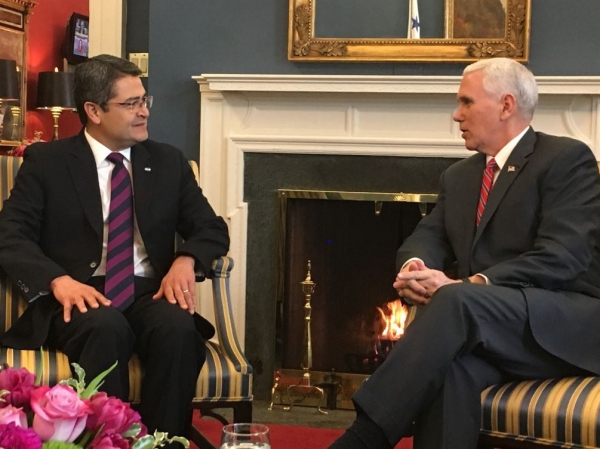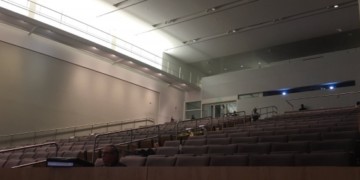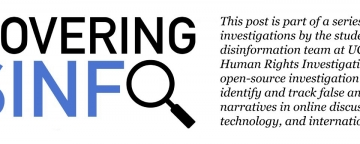The current border crisis isn’t just about immigration policies: it’s about more than a century of U.S. interventionism in Latin America.
Alejandro RamirezBlockedUnblockFollowFollowingDec 6

The stark images of border patrol agents lobbing tear gas at migrant families marching from Mexico to the U.S. shocked viewers, outraged officials like California’s incoming governor, and earned scrutiny from human rights and legal experts. For all the Republican party’s doomsaying about the migrant caravan — Trump called the caravan “an invasion” leading up to midterm elections — one of the most iconic and upsetting images became a mother fleeing from gas with her two children.
Just a month ago, the caravan was a story that some media critics believed received more attention than it deserved — proof of Trump dictating the news cycle before midterm elections. Certainly, Trump only cared about the caravan to the extent that he could rile up votes for Republicans, evidenced by the days of silence about the migrants following midterms.
There’s no way to ignore the story now, though. However, many stories about the caravan, both before and after their arrival at the border, seemed concerned with either covering Trump’s xenophobia, the migrants’ humanity, or some mix of the two.
For example, the New York Times’ podcast “The Daily” aired a dignified account of the caravan before the midterm elections, highlighting the workers, mothers, and children making the trek, but some of the broader context and politics seem left out. There are references to Trump’s inflammatory and dehumanizing language, but there’s little mention of what the president’s predecessors have done to Latin America, of how colonialism set the stage for mass migration.
While Trump’s chemical-fueled crusade against border crossers continues, it’s worth taking stock of how this situation — a crisis stretching across the hemisphere — started. And how U.S. foreign policy helped create the environments from which many migrants now flee.
The U.S. has a long history of interventionism in Latin America, historically favoring right-wing movements. Maybe the most embarrassing was a series of cartoonish assassination attempts on Fidel Castro since the 1960s, which included exploding cigars and a poisoned scuba suit. But beyond that, you find U.S. involvement all throughout Central and South America in the 20th century (along with plenty of meddlesome endeavors in the 19th century). Henry Kissinger and the CIA helped organize the 1973 Chilean coup and worked closely with the militaristic Pinochet regime. There’s also the Iran-Contra Affair of the 1980s, where the U.S. sold arms to Iran to raise money for a squadron of right-wing guerrillas in Nicaragua, attempting to overthrow the socialist Sandinistas (who themselves overthrew a U.S. backed dictator).
However, most in the migrant caravan aren’t fleeing Chile or Nicaragua: the bulk is from Honduras. As Professor Joseph Nevins of Vassar College wrote in The Conversation, the U.S. has a long history in Honduras stretching back to the 1890s, including the installation of military outposts over the last century, to protect U.S. interests in Latin America. Today, U.S. troops are still stationed in the country to help fight the war on drugs. The ruling elite of Honduras, Nevins writes, came to rely upon the U.S. and took brutal measures to maintain their position. In the 1980s, the CIA trained Honduran soldiers to fight communists in neighboring countries, but these soldiers also formed death squads that stalked Honduras and rounded up suspected leftists.
Today, the U.S. enjoys a civil if cold relationship with the ruling right-wing government of Honduras, who returned to power after ousting left-leaning president Manuel Zelaya in a 2009 military coup. Although the Obama administration decried the military’s overthrow of Zelaya, it still refused to call the takeover a coup. Hillary Clinton, Secretary of State at the time, helped organize elections months after the coup in an attempt to restore order, but refused to voice any support for the deposed Zelaya, responding to fears he’d be the next Hugo Chávez. The Right won the elections, and the violence in Honduras escalated. It became a deadly place for environmental activists and LGBT people; organized crime terrorized the country; it became the murder capital of the world. After assuming office, Trump’s administration recognized the right-wing government of Juan Orlando Hernandez, a despot accused of rigging elections and whose security forces are accused of the extrajudicial killings of protesters.
The U.S. often saves its scorn for left-leaning Latin American governments. When Nicaraguan president Daniel Ortega cracked down on protesters this past spring — sparking months of conflicts resulting in hundreds of deaths — politicians, especially conservatives, were quick to condemn the aging Sandinista. Venezuela remains the go-to boogeyman for the Right, who point at its dilapidated economy at the mere mention of socialism.
The Cold War shows that these patterns of support and destabilization aren’t unique to Latin America. There is also a common consequence to dismantling foreign countries: people leave home and seek shelter elsewhere, often in the U.S. Migrants and refugees are a part of U.S. history — a history that begins at their country of origins, and not just when they arrive stateside.
Of course, history matters little to Trump or his party. The president often contradicts himself, and, by some accounts, forgets many of the policies that come across his own desk. At any rate, what we need now isn’t just an understanding of the past, but a fuller grasp of how it has shaped the present. The migration issue isn’t just about citizenship and the border, but about the longstanding effects of U.S. interventionism. It’s an ongoing issue that will affect the world for generations, and tear gas can’t chase the problem away.




























Connect with us